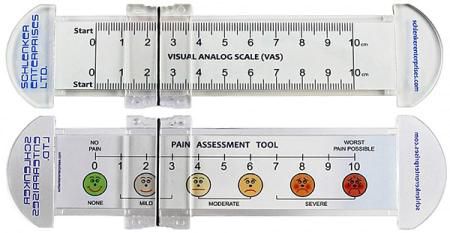PAIN THERAPY
Pain is an unpleasant sensory or emotional experience, determined or related to actual or potential tissue injury or described in terms that refer to these injuries.
Musculoskeletal pain is one of the main causes of pain for which the patient goes to the rheumatologist. For a diagnosis of certainty, pain should be characterized as intensity, duration, location, spreading and how often it repeates.
In the joint pain, the mechanical character will be differentiated from the inflammatory one.
For this, it is important to establish the onset and evolution of pain (at rest or at rest), to define the elements that aggravate or ameliorate the pain, the duration of the morning redness, the response to certain drug therapies.
The pain will be localized by referring to the affected anatomical region (lumbar, shoulder, knee pain) or to the system involved (bone, joint, neuropathic, vascular pain, etc.).
Duration of pain classifies pain into an acute one with a duration of less than 6 weeks, subacute to 12 weeks and chronic when the pain lasts for more than 12 weeks.
By the duration of pain, it is classified into an acute one lasting less than 6 weeks, subacute to 12 weeks, and chronic when the pain lasts for more than 12 weeks.
Acute pain can also be accompanied by reduced joint mobility, local swelling, erythema, heat and functional impotence. The most typical 2 examples being gout pain or lumbago pain.
Chronic pain is usually less intense, progressive and insidious, often accompanied by a negative impact on quality of life, general mood and sleep quality. These changes, in turn, can maintain painful perception. This type of pain is most commonly encountered in inflammatory musculoskeletal pathology (rheumatoid arthritis, axial or peripheral spondylarthritis, systemic lupus erythematosus and other collagenosis) or in degenerative pathology (arthritic disease).
Algic syndrome can affect a single joint – single-joint pain, 2 – 4 joints – oligoarticular, or over 5 joints – polyarticular pain.

The pain intensity is measured using the visual analogue scale or the numerical scale (NRS), whereby the patient marks the pain intensity felt at the time of evaluation on a horizontal line marked from 1 to 10, where zero (0) represents the absence of pain and 10 represents the highest pain she has ever felt.
Pain is a subjective experience and should be viewed as a personal experience, it is important to periodically assess the intensity of pain in chronic articular pathologies in order to monitor the evolution and to monitor the effectiveness of the therapy.
- reduced quality of sleep,
- appetite reduction,
- affect daily activities,
these being important components in the quality of life.
The quality of life is frequently evaluated in rheumatoid arthritis by the HAQ (Health Assesment Questionnaire of Life) and in the osteoarthritic disease, we have the WOMAC score (Western Ontario McMaster.)
In rheumatology, the treatment does not refer only to the administration of pain killers or anti-inflammatories but also to the adaptation of the drug therapy to the pathogenetic mechanisms involved and to the associated symptoms. Combination with drug therapy and other means of pain control: treatment of physio-kineto-masotherapy, possibly psychotherapy.
Patients with rheumatic disorders should understand that they are active participants not only in the anamnesis phase but also in establishing the scheme of investigations and therapeutics together with the rheumatologist and that they share the responsibility for choosing and monitoring the therapy.
It is important for the patient to understand from the start that the goal is not only to relieve pain but to improve the function and quality of life.

address:
Sos. Pacurari no. 70,
700515 IAsI, jud. IAsI, Romania
make an appointment:
0232 233 387
Appointments for daytime hospitalization:
0371 353 366
Email: info@consultmed.ro
